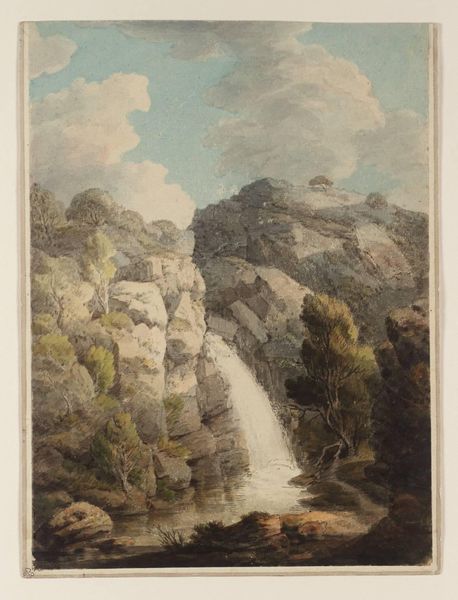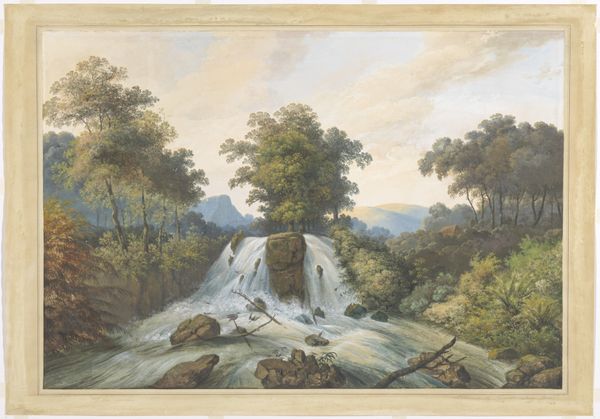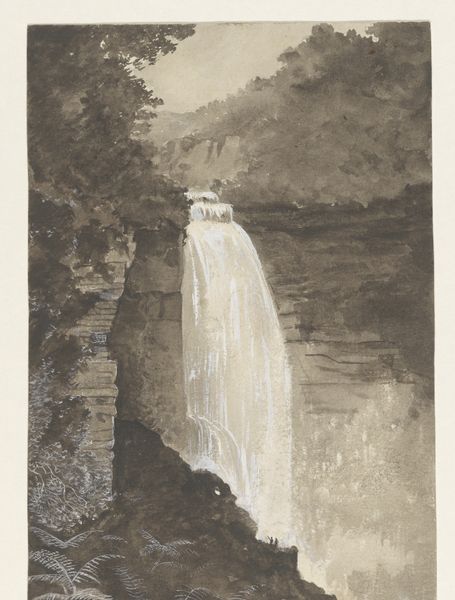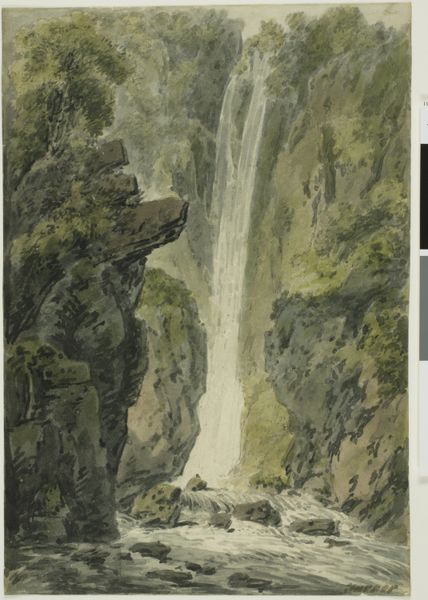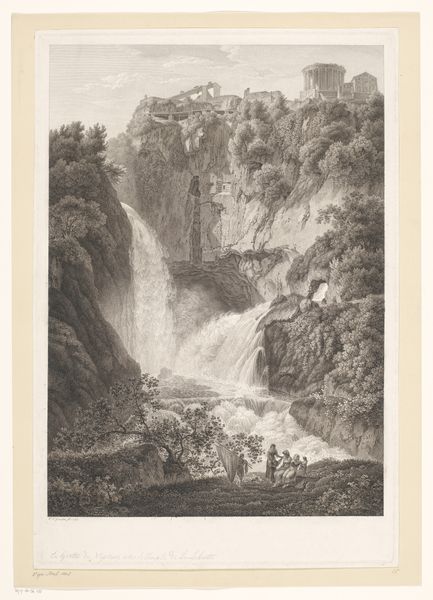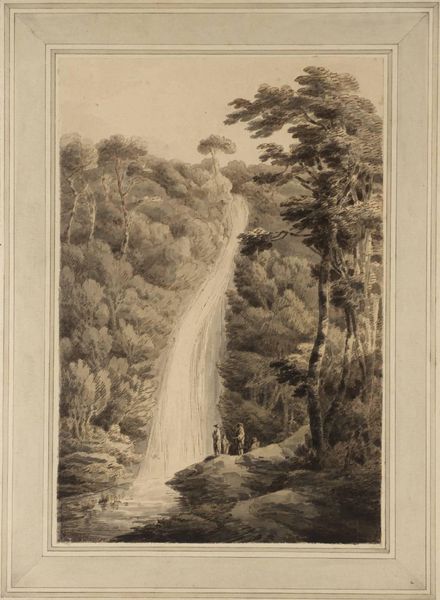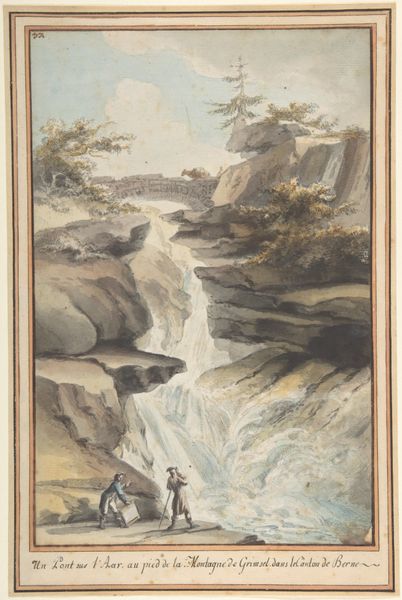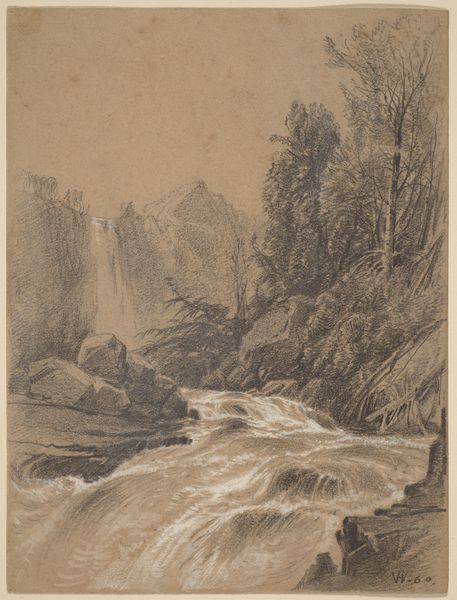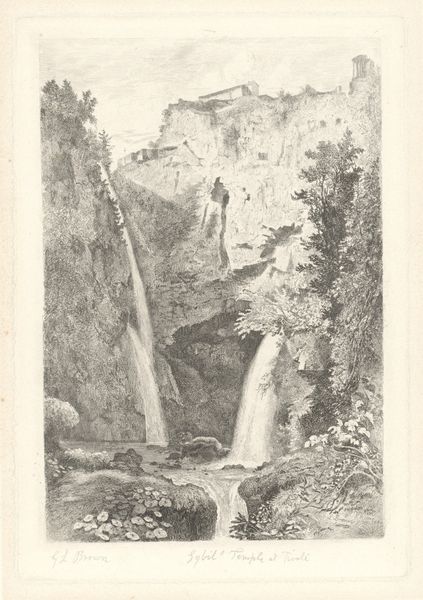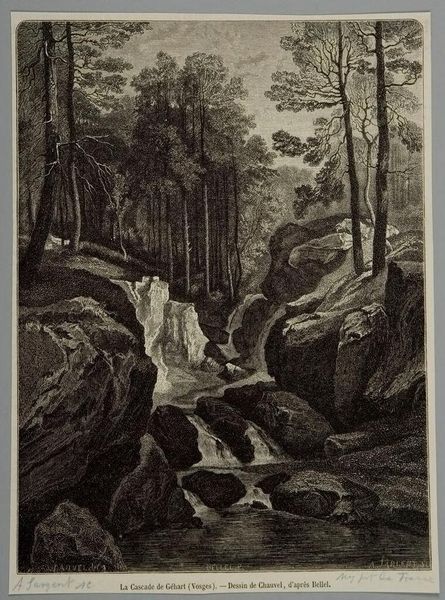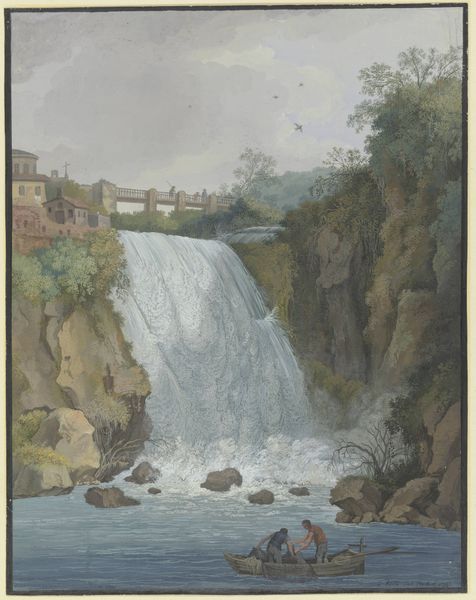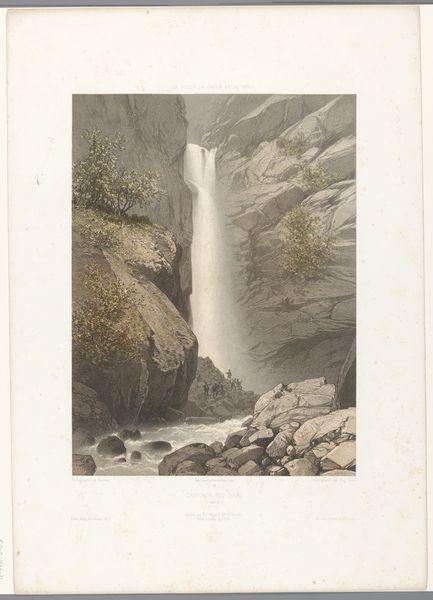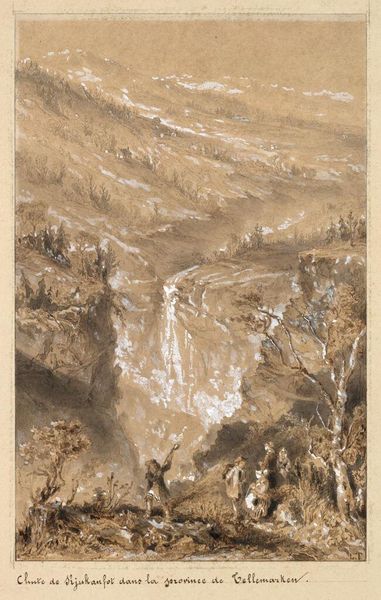
Dimensions: support: 484 x 335 mm
Copyright: CC-BY-NC-ND 4.0 DEED, Photo: Tate
Curator: William Pars, active in the late 18th century, captured this view, "Waterfall near the Lake of Killarney." The watercolor and graphite work presents an idealized landscape. Editor: My first impression is one of quiet observation. The muted colors create a very peaceful, almost melancholic atmosphere. Curator: Note how Pars uses a subtle layering of washes to define the forms of the trees and rocks. The composition directs the eye toward the cascading water. Editor: It’s interesting to consider the colonial context. Landscape paintings like these often served to naturalize British claims to land, portraying it as idyllic and ripe for the taking. Curator: The figures are positioned in the composition to subtly reinforce the scale of the landscape, creating a sense of sublime vastness. Editor: Indeed. Seeing this through a postcolonial lens, I'm also reminded of the erasure of indigenous presences in favour of an empty, romanticized version of nature. Curator: Pars's approach emphasizes the aesthetic qualities of the scene, creating a harmonious visual experience. Editor: True, but unpacking its historical dimensions also reveals the complex politics embedded within such representations of nature. Curator: A nuanced landscape, open to multiple interpretations, no doubt. Editor: Absolutely, revealing how art always intersects with broader socio-political narratives.
Comments
tate 8 months ago
⋮
http://www.tate.org.uk/art/artworks/pars-waterfall-near-the-lake-of-killarney-t08278
Join the conversation
Join millions of artists and users on Artera today and experience the ultimate creative platform.
tate 8 months ago
⋮
In the summer of 1771, a year after accompanying Lord Palmerston on a journey through Switzerland, Pars was asked to join his old patron on a tour of Ireland and the Lake District. By now his style was moving towards a softer and more atmospheric manner, with less use of careful pen outlines to define form. This watercolour has been laid down by Pars onto his own washline mount for presentation to Lord Palmerston. Given Pars's fondness for painting waterfalls, it is perhaps somewhat ironic that in 1782 he should have succumbed to a fatal bout of pleurisy, contracted from standing too long in the water whilst sketching under the Grand Cascade at Tivoli near Rome. Gallery label, September 2004
